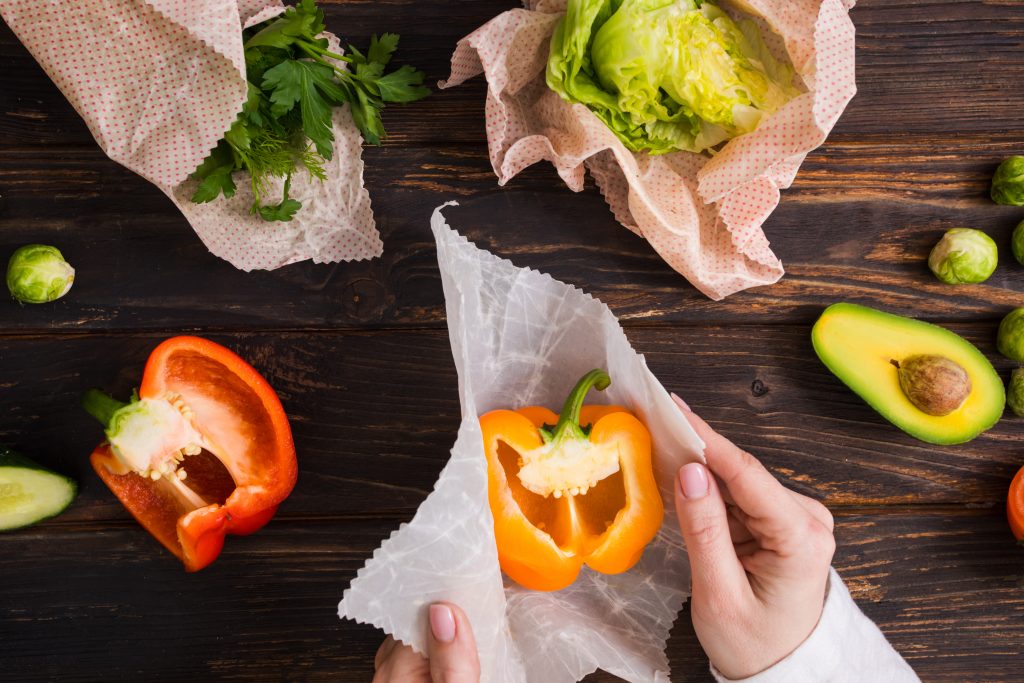
Once upon a time plastic was seen as the material that would advance the world, and indeed it did. However now, as I’m sure you’ve heard, plastic is no longer the way forward. When it gets thrown away it can take hundreds of years to break down, polluting our planet, killing wildlife and contributing to landfill (one of the biggest emitters of greenhouse gasses). Among plastics, those called ‘single-use plastic’ (that we make no attempt to reuse or recycle) are the most unsustainable and damaging for ecosystems.
It is a common practice to store food, whether it be lunches or leftovers, in plastic. The good news is that this is often in solid reusable containers. However, each year in the UK we still use and throw away roughly 1.2 billion metres of single-use cling-film every year. This plastic is very difficult to reuse, and cannot be recycled, leaving us with no choice but send it to landfill after one or perhaps two uses. Similarly, plastic sandwich bags and freezer bags contribute to the same problem.
Fortunately, both issues can have the same solution. A lot of single-use plastic bags and cling film used by UK households could be replaced with reusable containers, and/or wax wraps.
Wax wraps are a plastic-free alternative to plastic wraps and plastic bags. They have the same malleable and self-adhesive properties but also have natural antimicrobial properties and are easily wiped clean and reused. They can be made or bought, and typically last a number of months or years. Even when they do get a bit tattered, they can be easily restored at home, and at the very end of their life, they can be composted. Perhaps wax and cotton, two natural materials, provide a way forward.
WHICH recommend wax wraps over cling film, eco cling film and tin foil based on their ease of use and ability to keep food fresh.
If you want to reduce your climate impact, and live more sustainably, why not try using wax wraps to replace some single-use plastics. Below are some links to companies that sell them, but we have also provided you with a recipe to make your own!
Buy Wax Wraps
DIY Wax Wraps
You will need (per wrap):
- 25cm square of cotton fabric
- 20g of wax
- Beeswax is commonly used, although this can be swapped for candelilla wax for a plant-based option
- 2g of oil
- Jojoba oil is commonly used, however, it is not recommended for consumption so coconut oil can be used instead
- 5g of pine resin
- This is optional but makes the wraps stiffer and more adhesive
Method:
- Preheat your oven to about 150o C
- Make sure your fabric is clean and dry. It is recommended that the edges of your wraps have been cut with pinking shears to prevent frayed edges.
- Place your fabric onto a baking tray lined with parchment paper.
- Melt your wax using a double boiler on a stove (i.e. the bowl of wax should be placed over a saucepan of boiling water).
- Add in the pine resin and oil, and mix until it is all melted and combined.
- Paint the wax mixture onto your fabric
- Place it in the oven for 3 minutes and then remove, flip over and replace in the oven for a further minute.
- Ensure there are no patches on your fabric that are not covered. If there are you can add more wax and repeat the oven steps.
- Hand the wrap to cool and dry
Your wraps should last up to 6 months if cared for properly.
Caring for your wraps:
- Your wraps should be wiped clean after every use.
- You can hand wash your wraps in cool water and using a very small amount of dish soap (if any).
- Do not use with raw meat to avoid cross-contamination
- You can restore your wraps by melting in more wax mixture when they approach the end of their life.